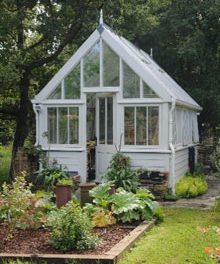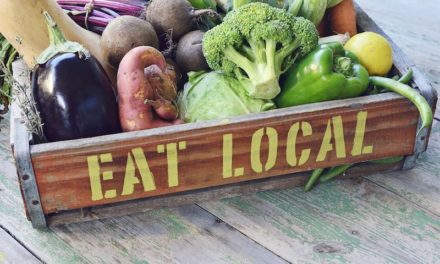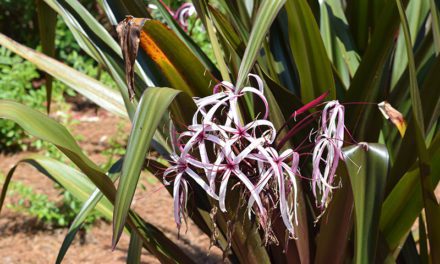 Poets just love spring. It’s the season in which a young man’s fancy lightly turns to thoughts of love. The season which inspired Wordsworth’s host of golden daffodils. Spring inspires me, too. I can hardly wait for the first shipments of plants and I rush to my local box stores and nurseries and what do I find? You guessed it. Hundreds of petunias (iffy here, at best). Thousands of impatiens and marigolds. Pansies everywhere. Oh, and maybe a few flats of begonias.
Poets just love spring. It’s the season in which a young man’s fancy lightly turns to thoughts of love. The season which inspired Wordsworth’s host of golden daffodils. Spring inspires me, too. I can hardly wait for the first shipments of plants and I rush to my local box stores and nurseries and what do I find? You guessed it. Hundreds of petunias (iffy here, at best). Thousands of impatiens and marigolds. Pansies everywhere. Oh, and maybe a few flats of begonias.
Don’t get me wrong, I like all of them, but I’d like to have a word or two with their buyers about getting in more variety. Well, I did, and here’s what I found. They have to buy what the growers grow. Not only does the number of varieties seem to get smaller every year, the number of growers is shrinking even more rapidly.
I was made aware of licensing restrictions when I offered to swap some of my home grown seedlings of the popular, but commercially unavailable, Tithonia (Mexican Sunflower) plants for some of my local nursery’s stock. “No can do.”, they said. They can sell only plants purchased from a state certified grower or they would lose their license. And more and more growers are either closing their doors, or changing their product line to a more profitable crop. Like Wacky-backy.
So what can we plant nuts do? We can ask our local nurseries to try and get special plants for us. Most are glad to make the search. They’re not always successful, but they try hard because they know they need our loyalty to stay in business. And their number, too, is diminishing. They should be your first resource. While they’re still here.
Many of us opt to buy from nurseries on line. The selection is usually quite different from what is available locally, but the plants are expensive and shipping costs average about 30% (and more) of the purchase price. To hold down that cost, the plant you get is quite small. We know Rome wasn’t built in a day, but it’s asking a lot for us to wait two or even three years for our plant to look like the one in the picture.
One of the things I do is plant seeds. Usually enough to take seedlings to my garden club’s plant sale and to donate to Lowcountry Master Gardener projects. But mostly, the seeds are planted for my own garden. Among my favorites are annual Moon Flower and Black Eyed Susan Vines, Tithonia, Zinnia, Agastache, Cleome, Cosmos, Butterfly Weed, several varieties of basil and of course, many more new varieties of tomatoes than I can possibly use. Most of these are started inside in January or February and set out in early March for the hardier ones, and mid to late April for the tender ones.
Admittedly, I am extremely fond of those which you can just ‘throw and sow’. These are usually described as Hardy Annuals. When the weather is right, all you do is toss the seeds onto well prepared soil, and either tromp all over the area so that the seeds make good contact with the soil, or rake them in lightly. Water well with a rose wand so as not to disturb the seeds, and keep moist until they germinate. Always successful with this method are zinnias. They come in different sizes, colors and flower shapes and are beloved by butterflies and bees. It will gladden your heart to see a stand of these colorful flowers in your garden, and they’ll bloom their heads off all summer long. Once you buy your first packet of seeds, you’ll never need to buy another. Saving the seeds is easy.
Global warming is a mixed blessing to gardeners. We’re already too warm in the Lowcountry to grow so many of the plants we loved from the north,–peonies, delphiniums and the like. It’s probable that we will soon become at least a 9A zone (we already are in most years) and I fully expect we will be a 9B in the next decade. The trade-off will be that there will be many tropical plants that we now have to keep protected in winter which will then be able to grow in ground. Too, many ‘annuals’ will perennialize without a hard winter.
There are several on-line and catalog sources for seeds of wonderful perennial seeds and plants, too. They do require a lot more patience from you than annuals. Unlike annuals, most won’t flower the first year. However, considering that decent sized perennials are about 10 times more expensive than annuals, it’s worth the wait.
Another thing you can do is get is your car and drive to north Florida,–like Jacksonville. It’s not that far away, but it’s light years away in terms of plant selection. Several friends make a trip or two every year. Their nurseries and box stores (the very same box stores we have here) stock many, many varieties that ours don’t.
It seems likely that our choices are going to continue to be even less varied, so we need to get creative. If you have a plant you really like, divide it, take cuttings or save the seeds. Ask your friends to do the same, and share. Pool on-line orders to save on the shipping.
Attend garden clubs’ or other organizations’ plant sales. Interesting plants can often be found at supermarkets and small specialty markets. Go to the Farmers’ Markets. Join a plant cooperative.
Botanical gardens such as Riverbanks in Columbia, Moore Botanical Farms in Lake City and the Native Plant Initiative on Spring Island commonly have a yearly plant sale; some more than once a year. Charleston Horticultural Society’s annual ‘Plantasia’ always has a great selection. Attend the Lunch and Learn series at the Port Royal Farmers’ Market. They give away dozens of plants as door prizes each year, most of which you can’t find commercially.
I always keep some small coin envelopes, pruners, baggies and a trowel in my car. You just never know when you’ll need to collect seeds (do I need to remind you to write the name of the plant on the envelope?), dig up offsets from a friend’s garden or do what a neighbor calls ‘civic pruning.’ Civic pruning? Bet you can figure it out…







